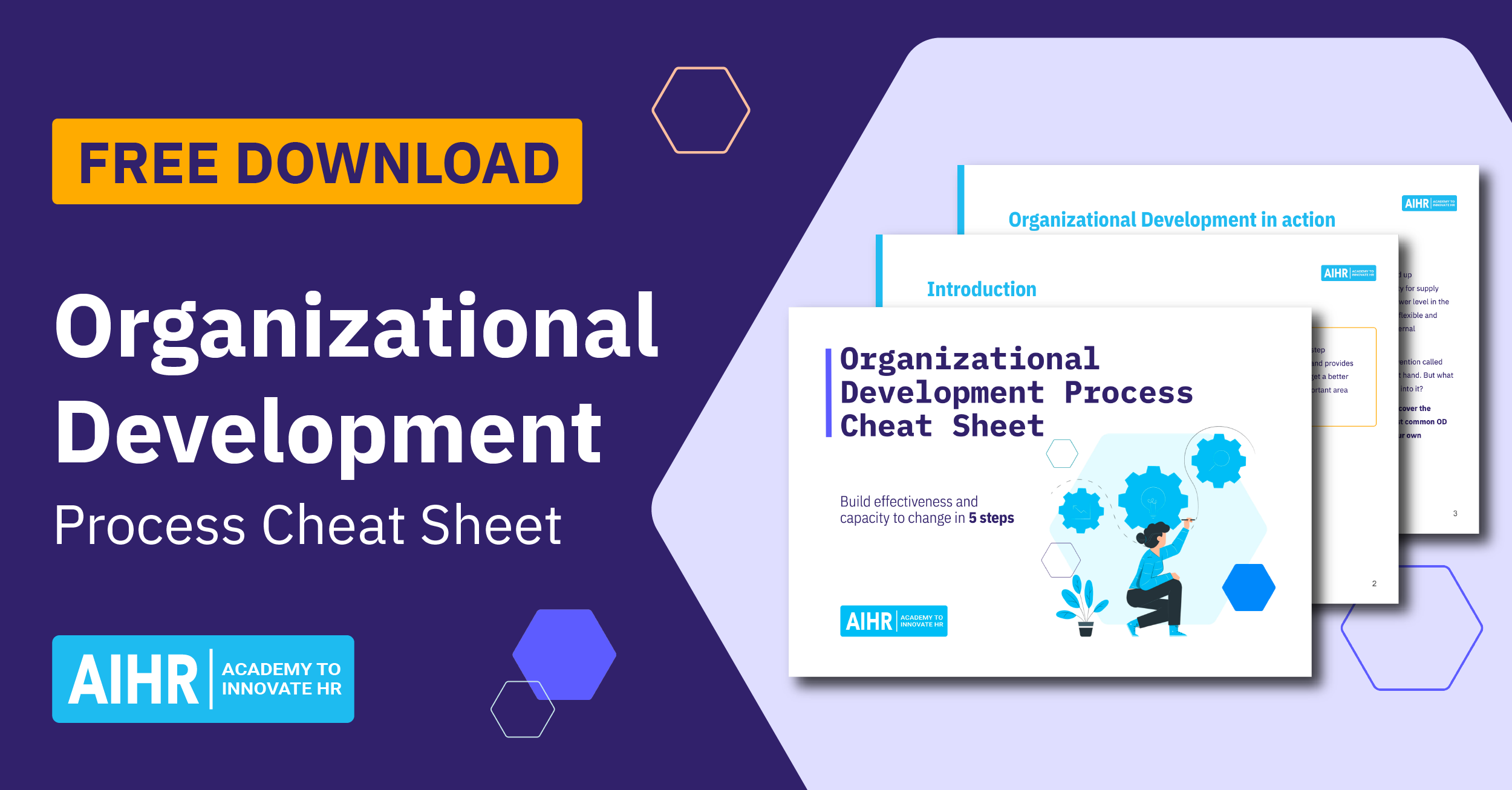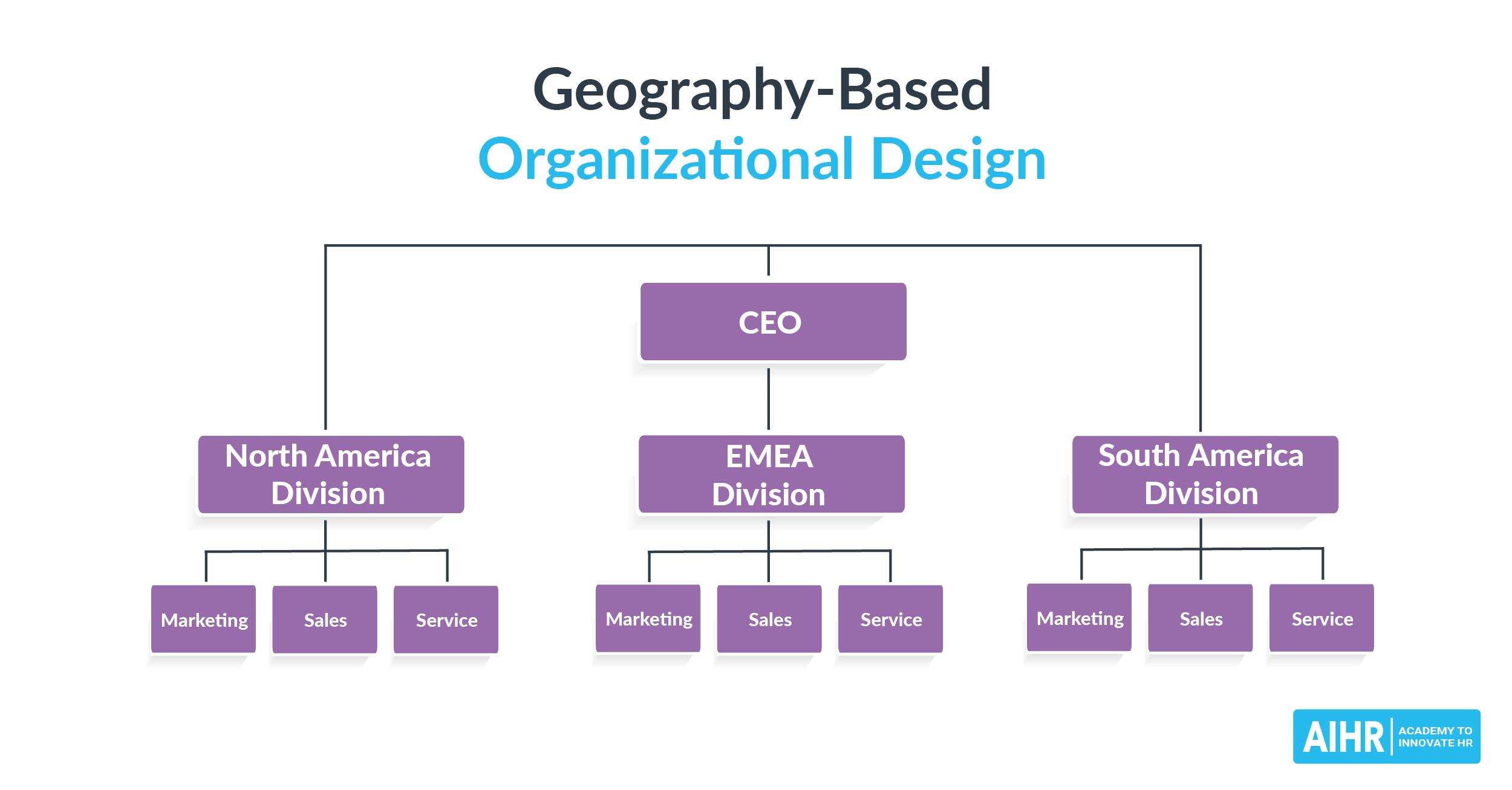Reporting Structure
What is a reporting structure?
A reporting structure refers to the system established within an organization that outlines the hierarchy of authority, reporting lines, and communication channels. It defines how employees, departments, and divisions are related to one another and who is accountable to whom. This structure is critical for ensuring clear paths for decision-making, accountability, communication, and organizational workflow.
Factors impacting reporting structure
The reporting structure is determined by several factors, including:
-
- The organization’s strategy and goals: The overall objectives and strategic direction of the company shape how the structure should be designed to achieve its goals efficiently.
-
- The company’s size: Larger organizations often have more complex reporting structures with multiple layers of hierarchy, whereas smaller organizations may have a flatter structure with fewer levels.
-
- The management style: The preferred management approach of the leadership can impact the structure. Some organizations might adopt a more centralized approach with decision-making authority concentrated at the top, while others might favor a decentralized approach where decision-making is distributed among various levels.
-
- The organizational culture: The organizational culture, including values, norms, and practices, can also shape the reporting structure. For example, a culture that emphasizes collaboration and teamwork might opt for a more interconnected and less hierarchical structure.
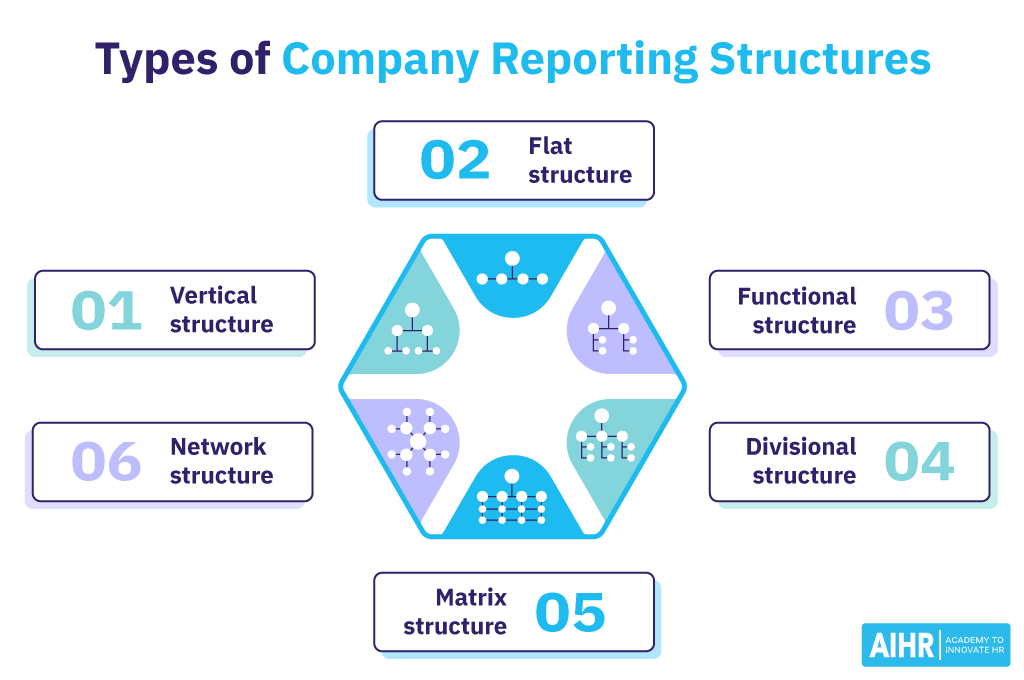
Types of company reporting structures
Company reporting structures are essential for ensuring that everyone understands their role within the company and knows who to report to.
1. Traditional vertical structure
This structure is characterized by a clear, vertical hierarchy where employees report to a single manager above them. This structure creates a well-defined chain of command and is common in larger organizations.
Many government organizations and older, established corporations like General Motors operate with a traditional vertical structure.
– Clear lines of authority and responsibility.
– Simplified decision-making process at the top.
– Can lead to slow decision-making lower down the hierarchy.
– Risk of information distortion as it moves up or down.
2. Flat structure
A flat reporting structure features fewer hierarchical levels, with more direct reporting lines between staff and executives. It is more common in startups and small businesses.
Companies like Netflix operate with a flat organizational structure, prioritizing minimal levels of hierarchy and encouraging broad spans of control.
– Encourages more open communication and collaboration.
– Faster decision-making and innovation due to fewer bureaucratic hurdles.
– Can lead to role ambiguity and conflict without clear lines of authority.
– May become challenging to maintain as the organization grows.
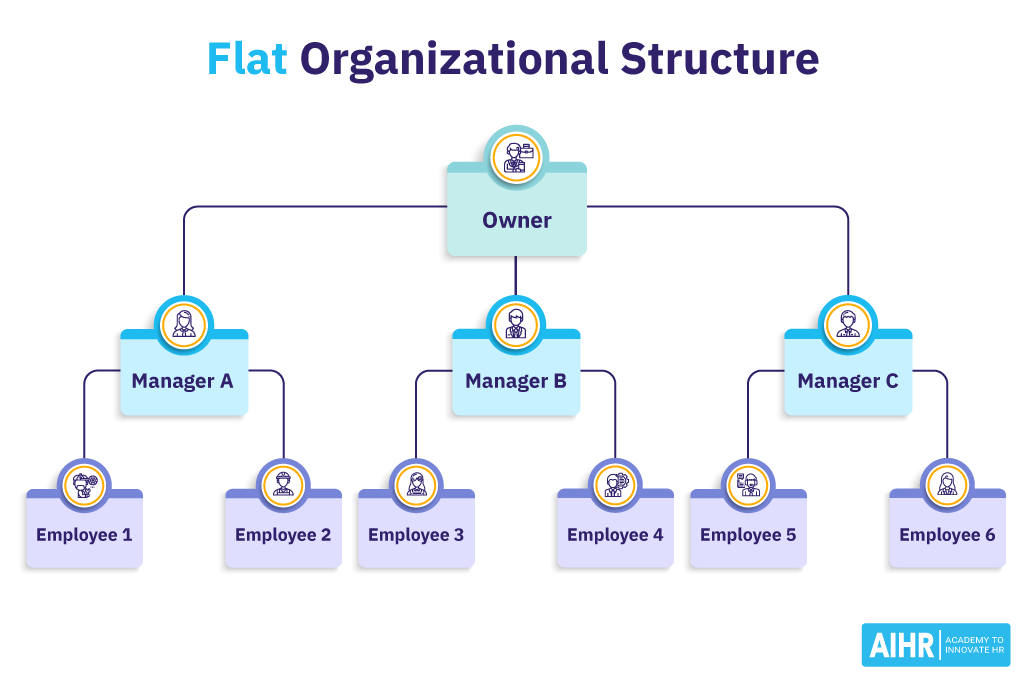
3. Functional structure
In a functional structure, organizations are divided into departments based on function, such as marketing, finance, and human resources, each reporting to a central leadership.
Large corporations like Amazon often use functional structures to maintain efficiency in specialized areas.
– Specialization and efficiency within functional departments.
– Easier management of specialized tasks.
– Can create silos and reduce cross-functional communication.
– May lead to conflicts between departments with different priorities.
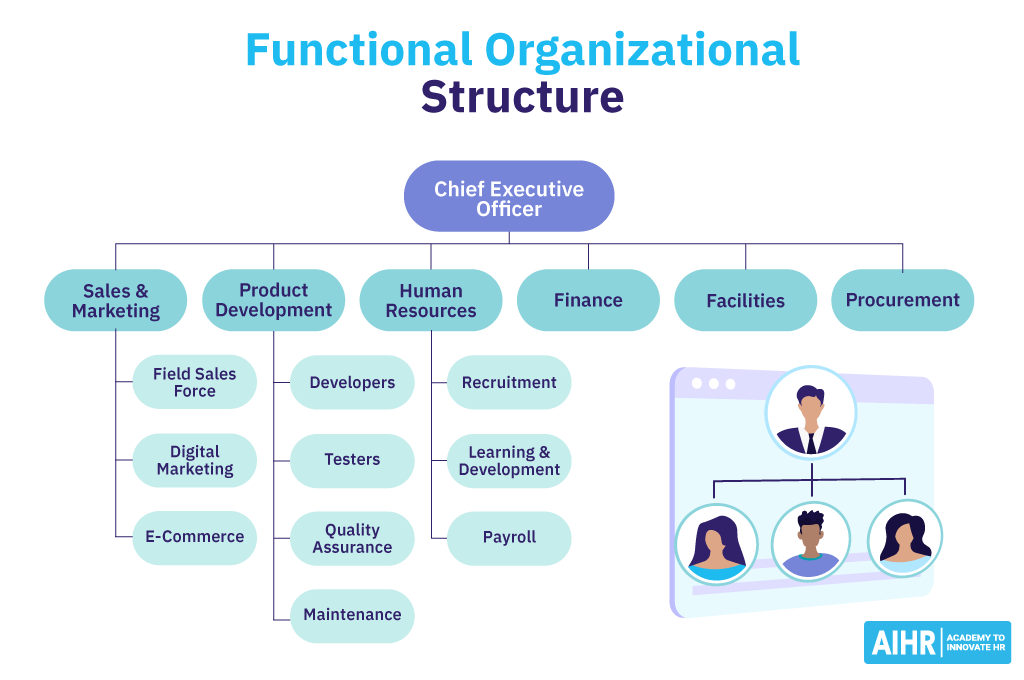
4. Divisional or product structure
In a divisional structure, the company is organized into divisions based on products, services, or geographic locations, with each of them functioning semi-autonomously. This structure is common in large corporations with diverse product lines or different markets.
Procter & Gamble operates with a divisional structure, focusing on product lines like beauty, health care, and family care.
– Allows for flexibility and a focus on specific markets or products.
– Quick response to market changes within each division.
– Can lead to duplication of resources across divisions.
– Potentially weaker communication between the divisions and central management.
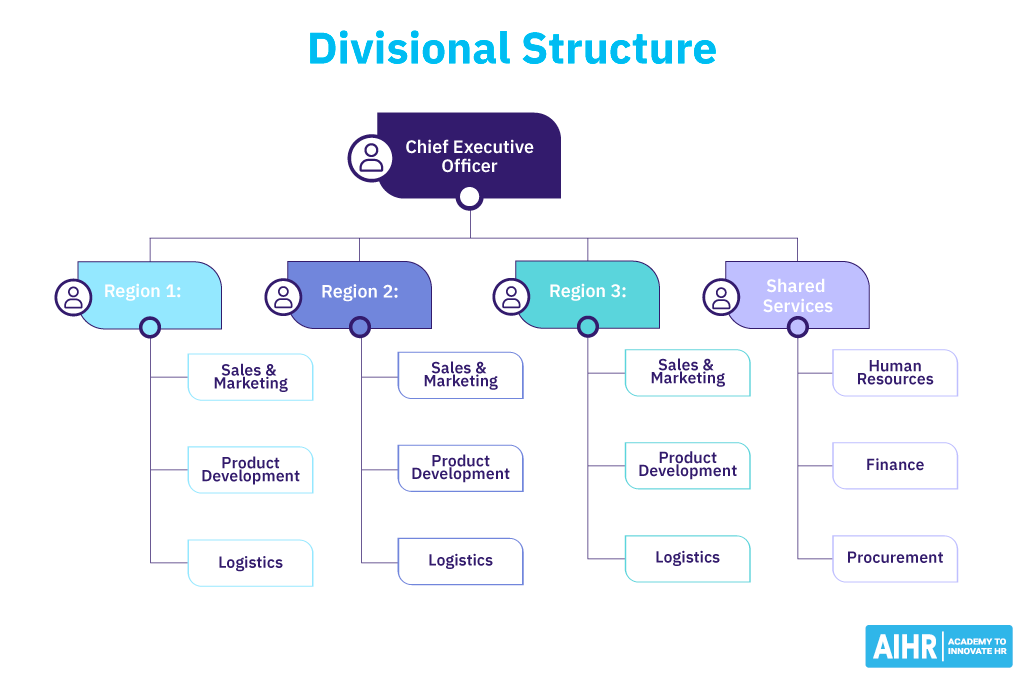
5. Matrix structure
A matrix structure combines elements of functional and divisional structures, with employees reporting to both functional managers and project or product managers.
Global companies like Philips use a matrix structure to balance the demands of product development and regional market focus.
– Facilitates efficient use of resources across projects.
– Enhances flexibility and interdisciplinary cooperation.
– Can lead to confusion and conflict from dual reporting lines.
– Requires excellent communication skills to manage effectively.
6. Network reporting structure
A network structure emphasizes decentralized, flexible connections across an organization, leveraging digital tools for collaboration beyond traditional hierarchical lines.
Tech startups and companies in rapidly evolving industries often adopt a network structure to stay agile and foster innovation.
– Enables organizations to adapt quickly to changes.
– Allows for dynamic allocation of resources across projects and teams.
– The lack of clear reporting lines can lead to ambiguity regarding responsibilities and decision-making authority.
– Requires advanced communication capabilities to navigate the complex web of interactions and maintain coherence.
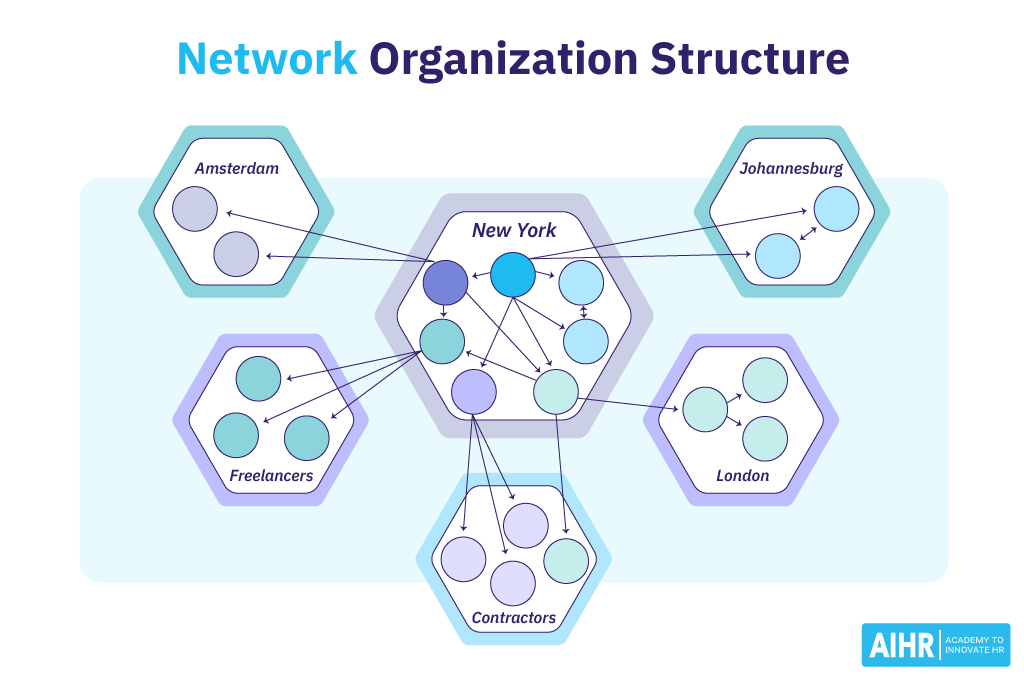
How to choose the right reporting structure for your organization
Choosing the right reporting structure is crucial for an organization’s efficiency and effectiveness. Here’s a step-by-step guide for HR professionals to select the most suitable one for their organizations:
- Step 1. Understand your business needs: Begin by thoroughly understanding the organization’s long-term and short-term goals. Then, determine what the organization needs from its reporting structure to achieve these goals. For example, does the strategy require rapid innovation (which may favor a flatter structure) or strict controls and standardization (which may lean towards a hierarchical structure)?
- Step 2. Consider your organization’s size and complexity: The size and complexity of your organization significantly influence the appropriate reporting structure. Larger, more complex organizations might benefit from a hierarchical structure to maintain order, while smaller entities may thrive with a flat or networked structure that encourages agility.
- Step 3. Weigh the pros and cons of different structures: Look into various types of structures (flat, matrix, network, etc.) and weigh the benefits and drawbacks of each of them in the context of your organization’s specific needs, objectives, and workforce dynamics.
- Step 4. Involve key stakeholders in the decision-making process: Get input from various stakeholders. This can provide valuable insights into the practical implications of different reporting structures. Stakeholders’ perspectives can highlight potential benefits and drawbacks that might not be immediately apparent.
- Step 5. Experiment and be willing to adapt: Sometimes, the best way to determine the most suitable reporting structure is through experimentation. You might start with a particular structure and be willing to make adjustments as you learn what works best for your organization.
HR tip
When choosing the right reporting structure for your organization, conduct a comprehensive skills and workload assessment across teams. This insight allows you to align the structure with your workforce’s capabilities and capacity, ensuring that responsibilities are distributed efficiently and teams are structured to maximize productivity and job satisfaction.
FAQ
Choosing a reporting structure involves evaluating the organization’s size, goals, and workflow. Flat structures benefit agile, innovative environments, while hierarchical models suit larger, more structured settings. Consider the organization’s culture and work nature, aiming for a structure that enhances communication, decision-making, and efficiency. Flexibility to adapt as the organization evolves is essential, ensuring alignment with changing needs and objectives.
To create a reporting structure, align organizational roles and departments with strategic goals, defining clear lines of authority and responsibility. This involves establishing a hierarchy from top leadership to front-line staff, often illustrated with organizational charts. The structure aims to enhance decision-making, accountability, and communication, ensuring efficiency and adaptability to meet evolving organizational needs.




